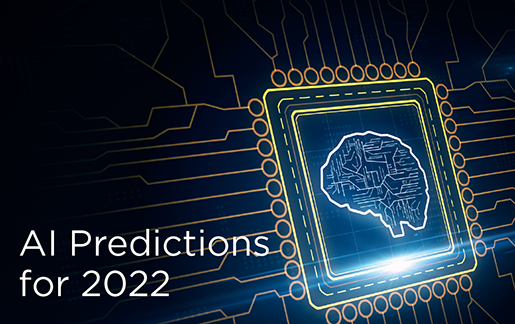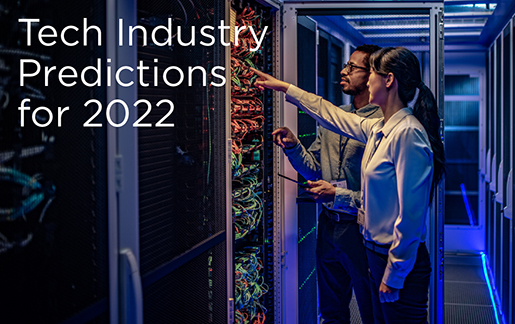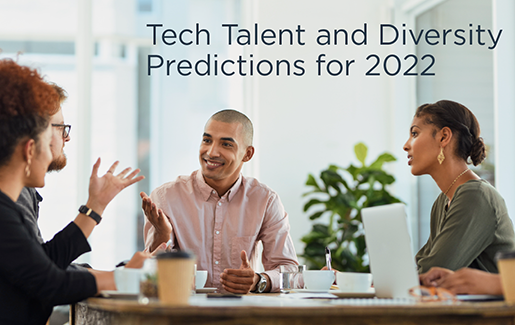
As artificial intelligence technology becomes more widely adopted by businesses—integrated in everything from chatbots to threat detection (and so much more), it’s hard not to wonder “what’s next?” We posed that question to members of CompTIA’s AI Advisory Council and received some enlightening and eye-opening responses. Here’s look at what the AI leaders said to expect in 2022. Note: These predictions are the personal opinions of the individual council members and do not represent the views of the AI Advisory Council as a whole or the members’ respective employers.
Increased Fairness and Transparency Awareness to Pervade AI Initiatives
“We expect organizations to adopt an AI-first approach to platforms, processes and digital transformation, with embedded AI at the core of operations optimization. In addition, Responsible and trustworthy AI is something that will grow substantially in the next year. This will be led by organizations in regulated industries driving fairness and transparency as persistent initiatives within their operational AI systems.” – Mechie Nkengla, CEO and chief data strategist, Data Products LLC
Recommendation Engines Take Centerstage with Consumers
“ML-powered recommendation engines will play an increasingly large role in consumer technology as behavioral data is leveraged to minimize decision fatigue and optimize user experiences.” – Lloyd Danzig, chairman and founder, International Consortium for the Ethical Development of Artificial Intelligence
Better, More Accessible Language Models
“This year, large language models (foundation models), commonly used in enterprise applications like chatbots and language translation, will be made more accessible through SaaS and APIs. Even as the models get bigger and bigger, moving from billions of parameters to trillions of parameters, open-source research efforts will help enterprises build better services by providing them tools to easily train, deploy, and scale these language models.” – Uday Tatiraju, vice chair, CompTIA AI Advisory Council
Multimodal Architectures Integrating Video, Audio, Text
“I'm looking forward to the advancements in multimodal AI architectures that can efficiently integrate video, audio, and text. We will begin to see these multimodal models embedded in many real-world applications apart from digital art and marketing.” – Uday Tatiraju, vice chair, CompTIA AI Advisory Council
Robots to Help with Household Chores
“We will see more robots making their way into the real world to help us with some chores like cleaning and cooking. With the help of both deep learning and reinforcement learning, robots are beginning to efficiently learn multiple tasks to assist humans at work and home. Having said that, we also need better laws, regulations, and government economic policies to help those of us who may lose jobs to robots.” – Uday Tatiraju, vice chair, CompTIA AI Advisory Council
AI-Infused Applications Will Be More Transparent, Explainable
“As more AI-infused solutions get deployed, we will start to see trust becoming one of the first-class requirements in all AI-infused applications. Users can't use something that is not transparent and not explainable.” – Rama Akkiraju, IBM Fellow
Maturity of AI Platforms Will Help Propel Application Growth
“Just like Web servers had to reach a level of maturity for web services to take off, AI platform maturity is an important criterion for AI-infused application growth. I think we will start to see more maturity in the AI platforms both in the open-source and vendor build platforms. “In addition, more use cases will be explored around delivering insights at edge devices. The convergence of cloud, machine learning, data on the edge via data fabrics, and internet of things (IoT) devices, will begin to make it possible.”” – Rama Akkiraju, IBM Fellow
Deep Fakes and Deep Fake Detectors
“Generative Adversarial Networks (GANs) will continue to power more fakes of everything (news, videos, documents) making it very difficult to distinguish what's real and what's fake. At the same time, AI to rescue again to detect fakes.” – Rama Akkiraju, IBM Fellow
AI for Self-Healing, Self-Managing IT Systems
“AI will be increasingly applied on IT data such as logs, metrics, traces, tickets, and other software development lifecycle artifacts such as code, deployment descriptors, change requests etc. for better IT operations management (AIOps), including incident detection, diagnosis, resolution and avoidance. We will see a thrust toward self-healing, self-managing IT systems.” – Rama Akkiraju, IBM Fellow
Automation, Digital Transformation Will Spur Innovation, Creativity
“One thing to look out for in 2022 is the rapid adoption of AI and automation use-cases into digital transformation initiatives. AI and robotics process automation (RPA) will allow skilled workers to focus on more challenging and creative jobs by automating role-based tasks. In complex contexts, AI-driven automation is required for scale and accuracy which can maintain cybersecurity and best practices. Workers will conduct the complicated exploit validation and remediation work, while AI will fill in for the routine, repetitive, and monotonous tasks with automation and machine precision.” – Jason Juliano, director of digital transformation, EisnerAmper Digital
Want to talk more about AI 2022?
Join CompTIA's Emerging Technology Community and the AI Technology Interest Group to engage with other tech leaders.

 Add CompTIA to your favorite RSS reader
Add CompTIA to your favorite RSS reader

